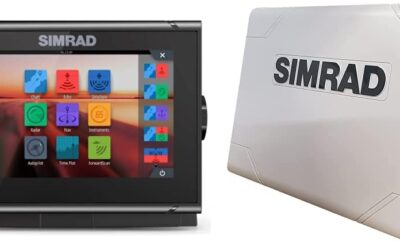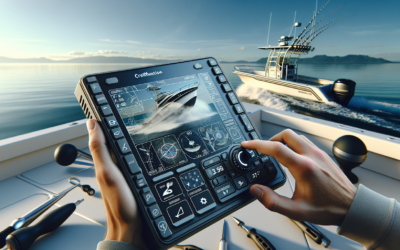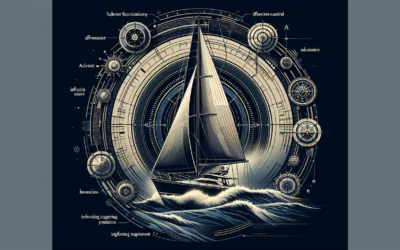You’re about to embark on an enlightening journey, exploring the unique features and capabilities of side-scan and down-scan sonar technology. As a marine enthusiast, understanding the difference between these two is crucial. In “Side-Scan Vs. Down-Scan: Benefits And Applications Of Different Viewing Angles,” you’ll discover the principles behind these technologies, their advantages, and their specific uses. Not only this, but you’ll also comprehend the edge one has over the other in different scenarios, shaping your decision-making while investing in marine technology. So, gear up to dive into the fascinating world of underwater imaging.
Understanding Sonar Technology
Sonar technology is essentially a way of “seeing” underwater. Since the advent of sonar, technology has revolutionised our understanding of the oceans, giving us unprecedented insights into his concealed underworld. Here’s a quick jaunt into its history, principles, and key components.
History of Sonar Technology
When it comes to the history of sonar technology, you might be surprised to know that it dates back to the First World War. The technology developed as a means of detecting submarines, evolving from crude and rudimentary systems to the sophisticated technology we use today. The term “sonar” is an acronym for “Sound Navigation And Ranging”, quite aptly descriptive of its function.
Basic Principles of Sonar Technology
The basic principles of sonar technology are relatively simple – by projecting a sound wave into the water and measuring the returning echo, objects’ sizes and locations can be determined. The sound wave travels till it hits an object, and then bounces back. The time it takes for the echo to return helps gauge the distance to the object.
Key Components of Sonar Systems
A typical sonar system comprises of a transmitter, a receiver, and a processing unit. The transmitter generates the sound waves, while the receiver picks up returning echoes. The data from the echoes are then processed and transformed into a visual representation.
Exploring Side-Scan Sonar
Side-scan sonar offers a more specialised approach to exploring marine environments with its unique characteristics and applications.
Definition and Function of Side-Scan Sonar
Side-scan sonar, as the name indicates, scans the seafloor on either side of a towed device or “towfish”. It generates high-resolution images of the seafloor and can effectively map large areas, revealing underwater topography and possible obstructions.
Operational Characteristics of Side-Scan Sonar
Unlike conventional sonar that sends sound waves downwards, side-scan sonar sends out sound waves to its sides. The reflected sound waves, or echoes, are then translated into images, providing a detailed snapshot of the underwater world.
Typical Applications of Side-Scan Sonar
The clear and detailed images produced by side-scan sonars make them perfect for a diverse range of applications, including locating shipwrecks, mapping aquatic habitats, underwater archaeology, and even cable and pipeline surveys.
Benefits of Using Side-Scan Sonar
The unique functionalities of side-scan sonar lend themselves to several benefits, particularly in mapping and identifying marine features.
Identifying and Mapping Large Areas
Side-scan sonar excels in large scale seafloor mapping. It offers an excellent bird’s-eye view’, making it adept at identifying large objects or underwater features.
Detailing Features of the Seafloor
Furthermore, the crisp, high-resolution images that side-scan sonar produces allow it to reveal intricate details of the seafloor, such as the presence of sediment patterns or marine life.
Enhancing Underwater Photography and Videography
The technology can also enhance underwater photography and videography, providing spectacular detailed shots that can be used for research, environmental monitoring or even the film industry.
Limitations of Side-Scan Sonar
Despite its considerable benefits, side-scan sonar has some limitations that you need to be aware of.
Issues with Vertical Relief
One challenge with side-scan sonar is difficulty in accurately depicting vertical relief. It might incorrectly illustrate the true height of objects, given how sound waves are sent out sideways and received.
Challenges with Differentiation of Materials
Material differentiation can also be challenging with side-scan sonar. Distinguishing between different types of materials based solely on their echo strength can be a conundrum, requiring experienced interpretation.
Confusion with Shadows or Echoes
Lastly, shadows and multiple echoes can cause confusion in the imaging. Shadows can be cast by elevated features and can hide smaller objects, while multiple echoes may distort the image.
Exploring Down-Scan Sonar
While side-scan sonar takes a broad, panoramic view of the underwater world, down-scan sonar opts for an up-close and personal perspective.
Definition and Function of Down-Scan Sonar
Down-scan sonar sends out sound waves directly downwards and then interprets the returning echoes to reveal what lies beneath. This allows it to produce high-resolution, almost photographic images of the underwater environment.
Operational Characteristics of Down-Scan Sonar
Down-scan sonar produces narrow, high-detail images by using high-frequency sound waves. These images are highly beneficial for identifying small objects and discerning fine details.
Typical Applications of Down-Scan Sonar
Down-scan sonar is commonly used in fishing, search and rescue operations, and marine research. Its excellent resolution and detailed imaging make it ideal for these applications.
Benefits of Using Down-Scan Sonar
Down-scan sonar offers several key advantages, especially when it comes to detailed imagery.
Providing Detailed Vertical Images
The primary benefit of down-scan sonar is its ability to provide detailed vertical images, offering a remarkable view of the seafloor with near photographic detail.
Aiding Fishing and Diving Expeditions
Down-scan sonar is also incredibly beneficial for fishing and diving expeditions. Detailed images of fish schools or underwater objects significantly enhance these activities’ success and enjoyment.
Supporting Scientific Research and Surveys
Lastly, down-scan sonar greatly supports scientific research and surveys. Unhindered views of small-scale features and objects contribute significantly to understanding marine environments better.
Limitations of Down-Scan Sonar
As with any technology, down-scan sonar also comes with its fair share of limitations.
Issues with Lateral Imaging
Unlike side-scan sonar, down-scan sonar struggles with lateral imaging. It casts a relatively narrow beam, and therefore, covers a smaller area compared to the side-scan.
Reading Complexity in Varied Water Depths
The performance of down-scan sonar can also be affected by varying water depths. Deeper waters can significantly degrade the quality of the return signal, making interpretation more challenging.
Difficulty in Identifying Small Objects
Another challenge lies in the identification of small objects. Due to the nature of the technology, minute objects tend to blend into the surrounding noise, especially in turbulent or debris-filled waters.
Comparing Side-Scan and Down-Scan Sonar
Both side-scan and down-scan sonar have distinct features and uses, their strengths lying in different areas.
Comparing Image Quality
Side-scan sonar provides wide, broad views of the seafloor, while down-scan sonar offers detailed, near-photographic vertical images. Thus, side-scan is preferable for surveying large areas, while down-scan is superior for pinpointing specific objects and structures.
Comparing Speed and Efficiency
Similarly, if you wish to conduct a quick scan of a large area, the side-scan sonar’s wider coverage makes it more time-efficient. However, for a comprehensive examination of a specific spot, down-scan sonar can be more effective, despite taking longer.
Comparing Suitability for Different Applications
In terms of application, side-scan is useful for mapping and identifying large features, while down-scan can excel in locating fish schools or small features.
Choosing Between Side-Scan and Down-Scan Sonar
The choice between side-scan and down-scan sonar boils down to your specific needs and applications, budget, and operator experience.
Considerations Based on Specific Needs and Applications
Your specific needs and applications should be the primary considerations when choosing between these sonar types. Make an informed choice based on whether you need to scan large areas or require detailed observations of a particular spot.
Affect of Budget and Resource Availability
Financial factors also play a crucial role in this decision. High-resolution side-scans or down-scan systems may be costly, so understanding your budget constraints can help guide your selection.
Importance of Operator Skill and Experience
Lastly, the choice also depends on the operator’s skill and experience. Interpreting sonar images requires knowledge and experience, so ensure the operator is well-versed with the chosen sonar type.
Future Developments in Sonar Technology
Lastly, let’s take a look at the exciting future developments in sonar technology. It’s an ever-evolving field, ripe with exciting possibilities.
Emerging Advancements and Innovations
Several advancements and innovations are making their mark in sonar technology, from the development of smaller, more portable systems to the integration of GPS and other technologies for enhanced navigational capabilities.
Influence of AI and Machine Learning
Artificial Intelligence and Machine Learning are also influencing sonar technology, with their ability to automate sonar data processing and interpretation, making the technology more accessible to a wider demographic.
Impacts on Side-Scan and Down-Scan Operations
These advancements will not only refine the overall sonar technology but also specifically enhance side-scan and down-scan operations. With advancements in imaging, the future for these sonar technologies is brighter than ever.
Whether you’re a marine biologist, a commercial fisher, a diver or just a curious explorer, understanding the benefits and applications of different viewing angles can make a world of difference underwater.









